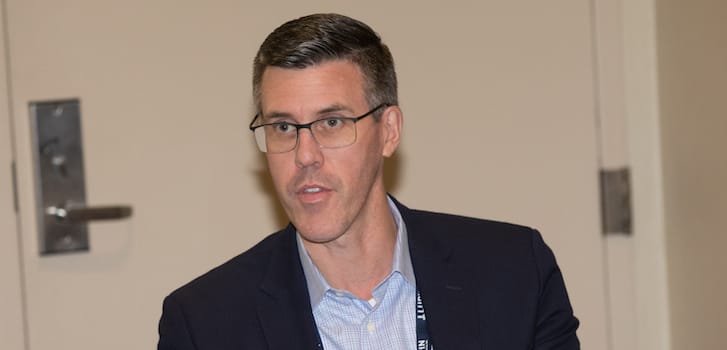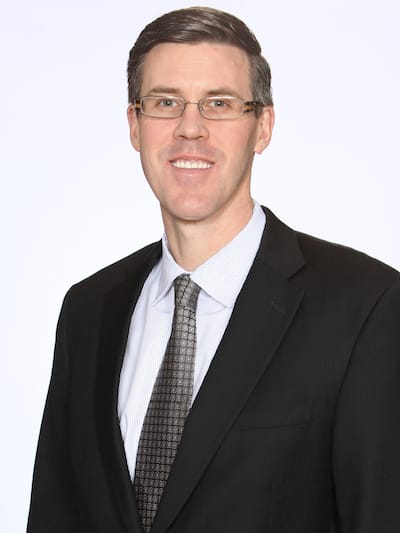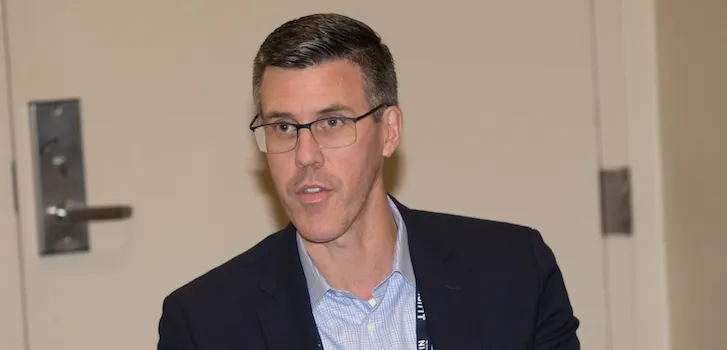
CVS’ Kevin Hourican: “We absolutely see pharmacists as the front line of health care.”
WOONSOCKET, R.I. — Kevin Hourican is a relative newcomer to community pharmacy, but that hasn’t prevented him from helping CVS Health live up to its positioning as a pharmacy innovation company.
Since being named executive vice president of retail pharmacy and supply chain 18 months ago, Hourican, who was trained in economics and supply chain management at Penn State University, hasn’t missed a beat in applying his considerable analytical and process management skills to hone CVS’ core business.
“We absolutely see pharmacists as the front line of health care,” he says. “We have 10,000 locations, so our pharmacists are very accessible. Our pharmacists are very skilled professionals, many with a Pharm.D. degree. They are very capable, talented, educated professionals when they enter the workforce. They can do more to address health care needs in an efficient, cost-effective manner.”
For his success in helping create the conditions in which CVS Pharmacy professionals can flourish and take on a bigger role in addressing the problems of access, quality and cost that bedevil the American health care system, the editors of Chain Drug Review have named Hourican the publication’s Pharmacy Executive of the Year.
As he sees it, the pharmacist’s first duty is, and will continue to be, to make sure patients use prescription pharmaceuticals safely and in a manner that maximizes efficacy. Medication adherence is at the heart of their work.
“The most important thing we do is keep people on their path to better health through adherence,” asserts Hourican. “Here at CVS we have best-in-class capabilities of targeting which patients are not starting therapy, and we engage with those patients to educate them on the importance of beginning their maintenance therapy.

“One of the biggest benefits of e-prescribing is we can now see a medication that a person in the past perhaps never brought to the pharmacy. Some patients simply forget to come to the pharmacy. Others either don’t understand or do not sufficiently appreciate why they need to begin therapy. When that happens, we reach out telephonically to those patients to help them understand the importance of starting on therapy that prescribers deem important. Patient behavior modification is hard work, but it is rewarding and is why most of our pharmacists went to pharmacy school in the first place.”
CVS is equally proactive when patients who have begun treatment become nonadherent.
“As people fall off therapy, we engage with those patients to coach them and encourage behavioral modification,” Hourican notes. “And technology is now helping us do that in a more effective way. We have iPads in every store that provide access to videos about what a good behavioral counseling conversation looks like and sounds like. Our field leaders go out of their way to reinforce that message of what good looks like on their visits to our stores.”
“Our top priority is adherence. It helps patients live longer, healthier lives. And our PBM partners and health plan partners are extraordinarily interested in people staying adherent to their medication. Adherence helps reduce hospitalizations and unnecessary future health problems down the road. So that’s No. 1.”
To further empower patients to utilize their medications properly and remain adherent, CVS last fall launched the ScriptPath Prescription Schedule. Designed with people taking multiple medications in mind, the system — driven by Universal Medication Schedule technology created in-house — brings all relevant information for patients together in one place, where it is communicated with the aid of easy-to-understand icons that correspond to those on redesigned prescription vials. The graphics were developed in association with Deborah Adler, who is best known for her past work on Target Corp.’s prescription packaging.
“We’re really excited to be able to have a different level of conversation with our patients using a clinical science engine that slots the medications in a way that makes it easy for patients to understand exactly when they should be taking a given medication,” Hourican explains. “Cholesterol medications, for example, are best taken in the evening. Most blood pressure medications are best taken in the morning. Millions of Americans are taking their medications at suboptimal times. Our system completely understands which medications are best taken together and which medications should best be taken separately. The system understands all of those rules — drug-on-drug combinations, taken with food, not taken with food — and consolidates the medication dosing into the fewest number of times per day: optimally, no more than four.”
“In partnership with the clinical engine, we have designed a brand new prescription label featuring clear icons of when a patient should take their medication. For example, a rising sun indicates taking the medication in the morning. A setting moon indicates bedtime. When you couple the design aesthetic of the new label with the powerful clinical engine, we have designed a proprietary system that will enable improved health outcomes. We have proven through testing that patients are more adherent to their medications when using our system, and there is significantly less confusion about when and how to take medications. Our patients and our pharmacists love the new system.”

Hourican: “We’re now equipping our pharmacists
to help our patients save money.”
Patient-centric innovation is ingrained in the corporate culture at CVS Health. “I am proud to work with such a strong leadership team at CVS,” says Hourican. “I have the good fortune of working with a talented and motivated team that is helping innovate retail pharmacy.”
The company is constantly working to augment the scope of its pharmacy professionals’ activity and their positive impact on the lives of patients. One new way they are helping customers is by identifying how they can obtain the prescription drugs needed at the lowest possible cost.
“We’re now equipping our pharmacists to help our patients save money,” Hourican says. “That’s not something that historically a pharmacist or a pharmacy has really worried much about. We have lived in a world where your health insurance or your employer determined your co-pay, and if the drug wasn’t covered, then you made a choice as a patient if you wanted to take the medication, or not. Essentially, that was the model.”
“That situation is changing with the increased prevalence of high-deductible health plans with more restrictive formularies. An outcome of those plan designs is that select medications are pretty expensive for our patients, and we’ve had to pivot to improve how we support our patients. We are now building a really powerful capability to address that.”
Called the Navigator, the new system will allow pharmacists and technicians to make sense of the myriad complexities of the insurance landscape, and help guide patients to the solutions that make the most sense for them.
“The Navigator will enable us to understand what needs to be done to maximize the benefit for that particular patient,” notes Hourican. “We have, because of our PBM background and experience, deep connectivity to the actual real-time benefit of the patient. We can see such things as where are they in their deductible in January versus July, and what does the benefit cover. Our pharmacy teams will work actively to find clinically equivalent alternative therapies that maximize a patient’s plan benefit. If the patient is underinsured or doesn’t have insurance, we will take actions to save the patient money in the cash discount market (including coupons). The call to action would be to come in to any CVS, where our pharmacy experts are there to help you save money. We’re going to do that at no cost for everyone. We think it will be an N-of-1, unique-to-us, capability. “
CVS Health is committed to enlarging the field of action for its pharmacists. More accessible than any other health care professional and commanding a high level of trust, they are ideally placed to interact with patients in the neighborhoods where they live and work. Hourican indicates that point-of-care testing is one area where pharmacists should be allowed to do more.
“It’s an exciting opportunity,” he says. “Think about a 24-hour CVS pharmacy in a community that doesn’t have a MinuteClinic location, or the MinuteClinic is closed, and mom has a sick child at 2 a.m. Mom has to wait until the doctor’s office opens up in the morning, and all the pain and suffering that goes along with that, versus she can get in the car and run over to a 24-hour CVS store. When she gets there she can have her child tested for flu or strep, get a positive or a negative result quickly and, through protocol with doctors or our MinuteClinic nurses, the pharmacist can write a prescription and fill it all within a very, very short time frame.
“That would be a breakthrough consumer experience. That’s not years from now. That’s something that we believe is in the more near-term field, and we’re working at making it reality.”
Hourican and his colleagues are convinced that CVS pharmacists can make a difference in long-term as well as acute care. He cites a program under consideration in Texas as an example.
“Texas is looking at improving access and cutting costs by having pharmacists actually do cholesterol testing and giving them, under the proper protocol, prescriber authority to be able to write for cholesterol medication. The point is they’ve learned that getting people started on that medication is life saving, and can avoid heart attacks or expensive surgeries.”
Hourican, who is determined to help keep CVS Health in the vanguard of such developments, is energized by community pharmacy’s current trajectory. His one frustration is the pace of change. “I’d like to see very logical, business-coherent, patient-friendly developments happen at a much more rapid rate,” he says.







